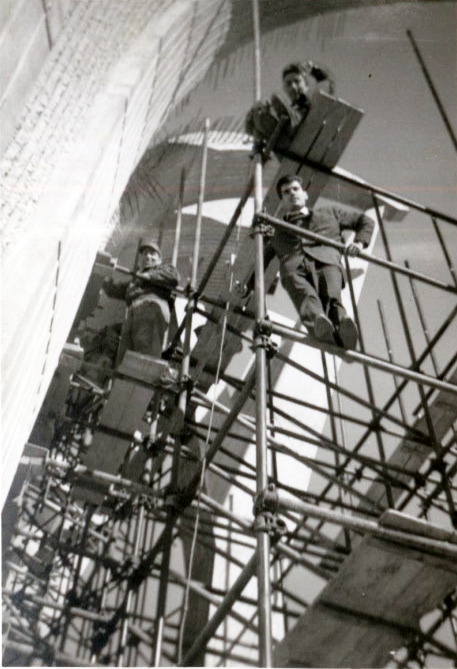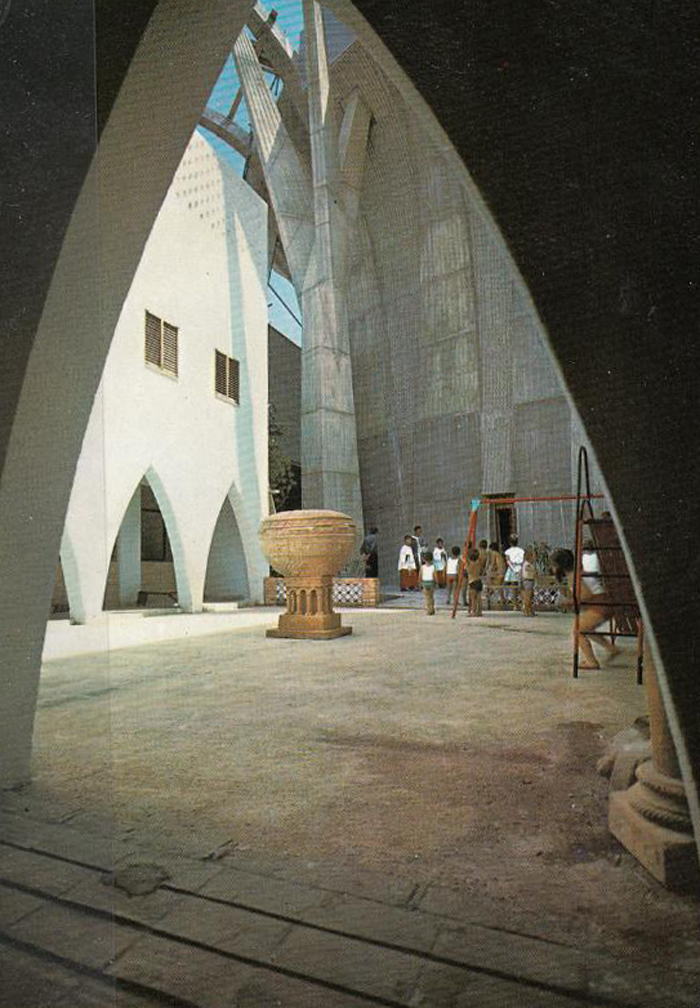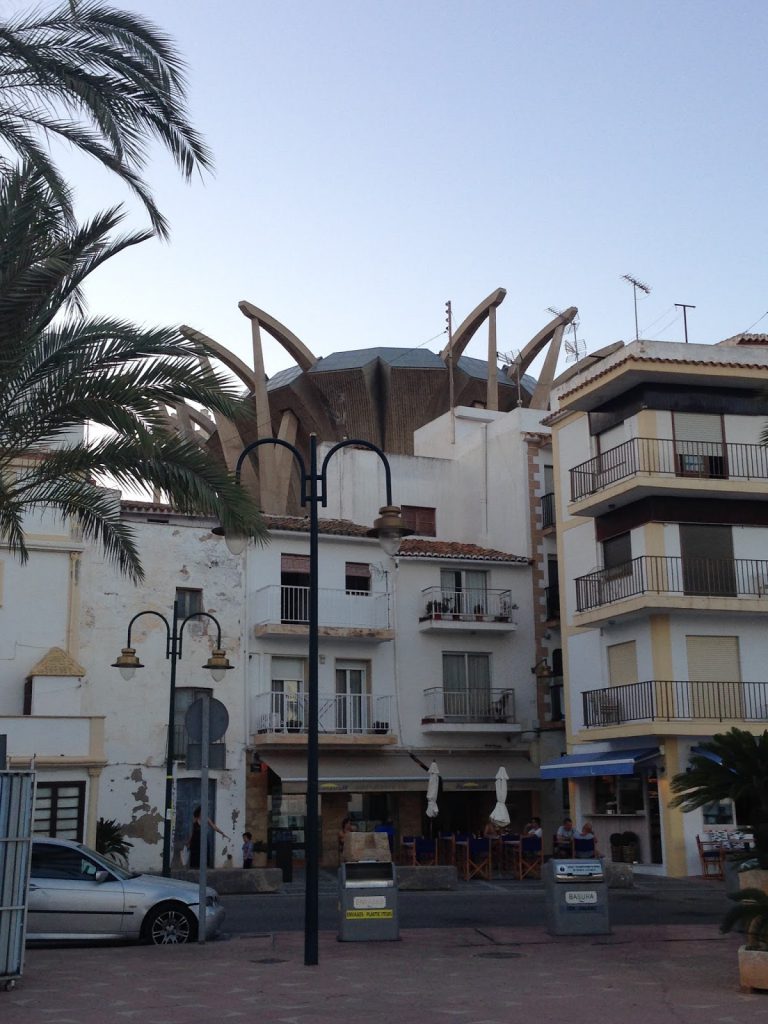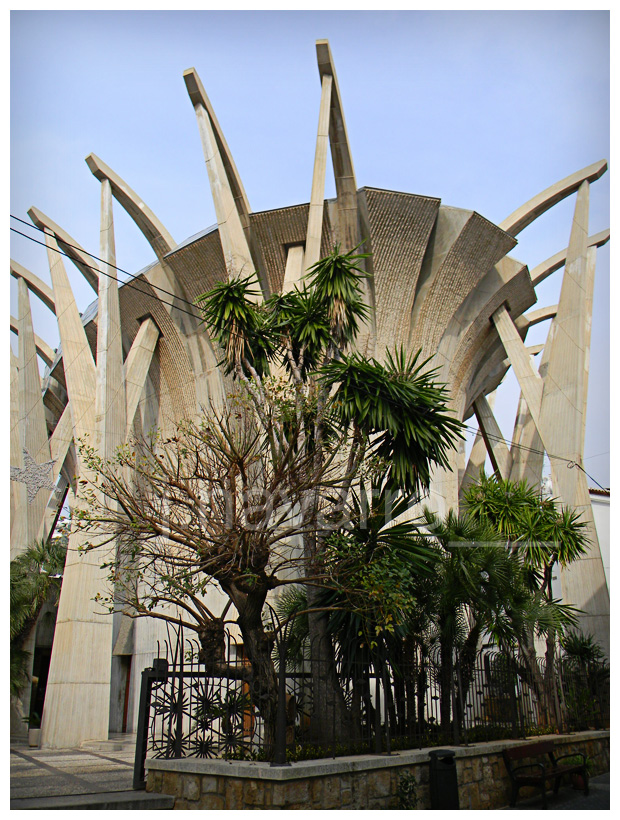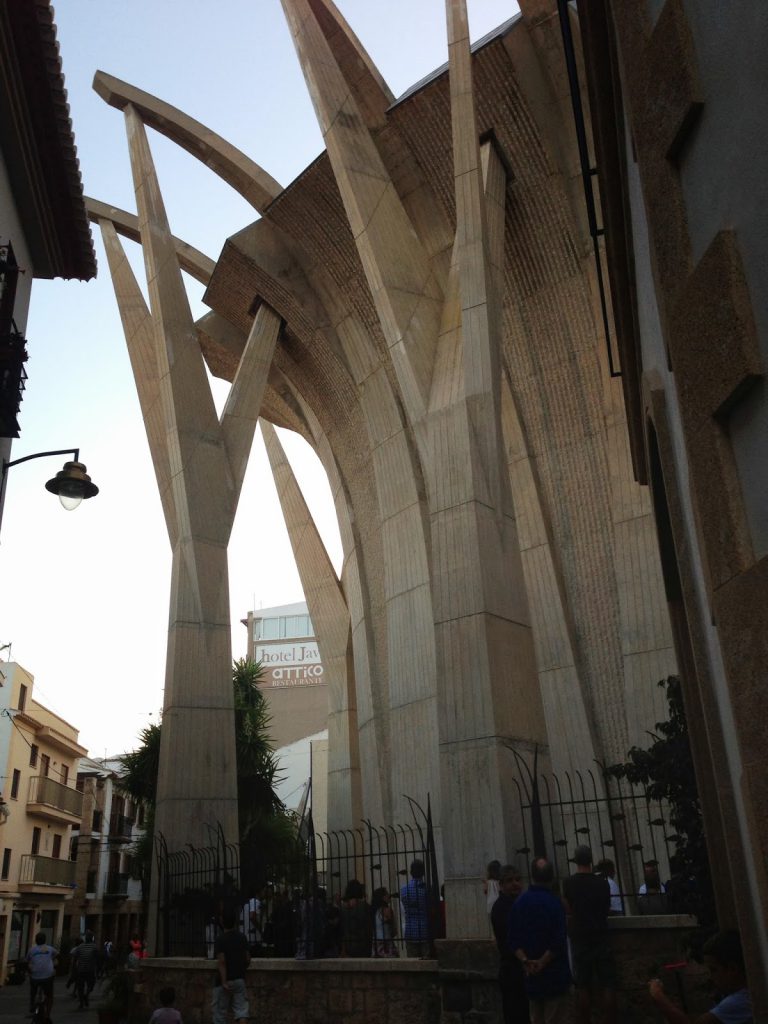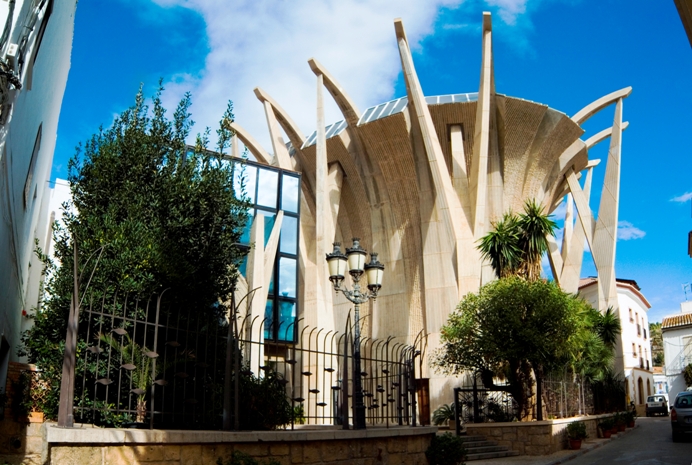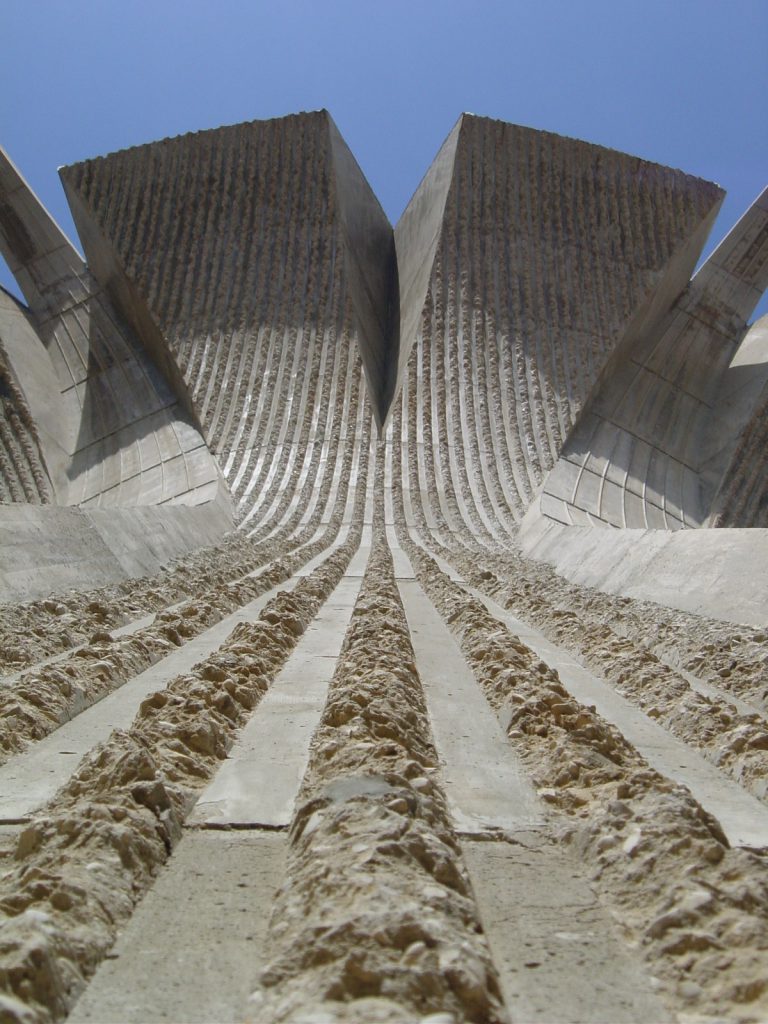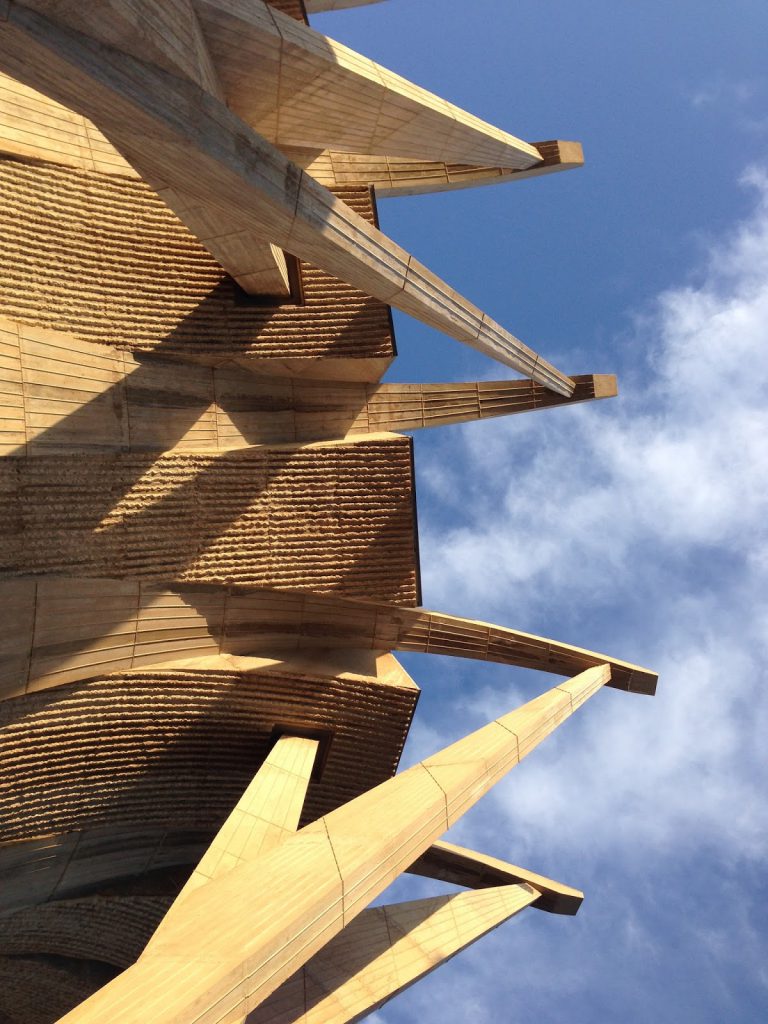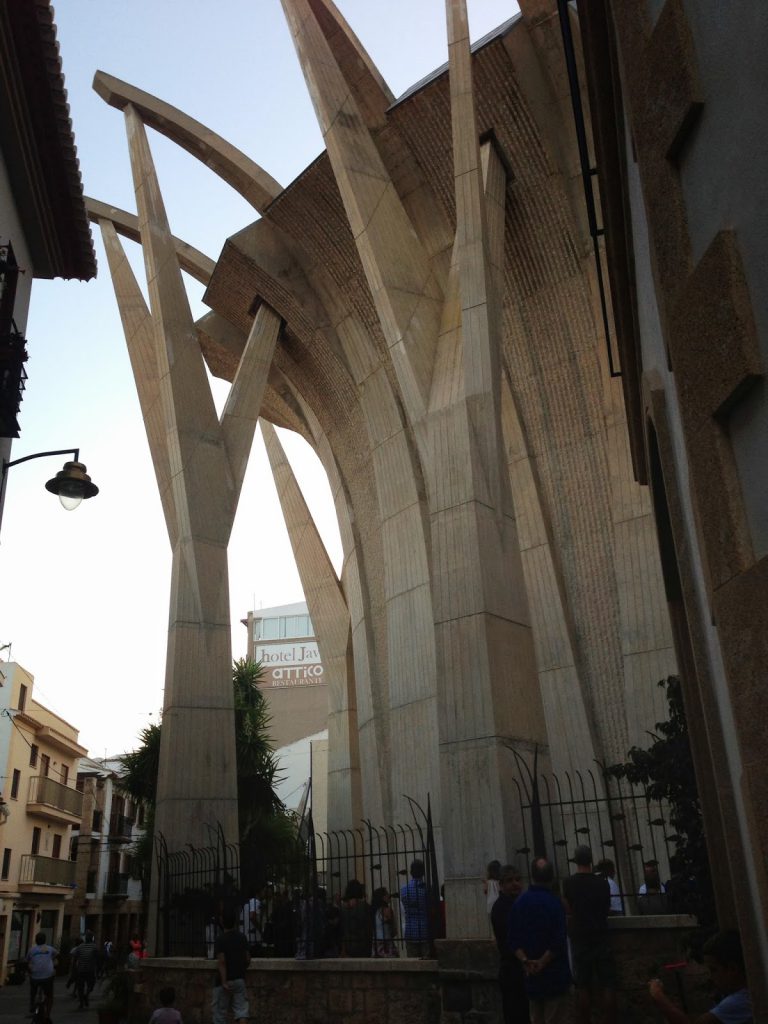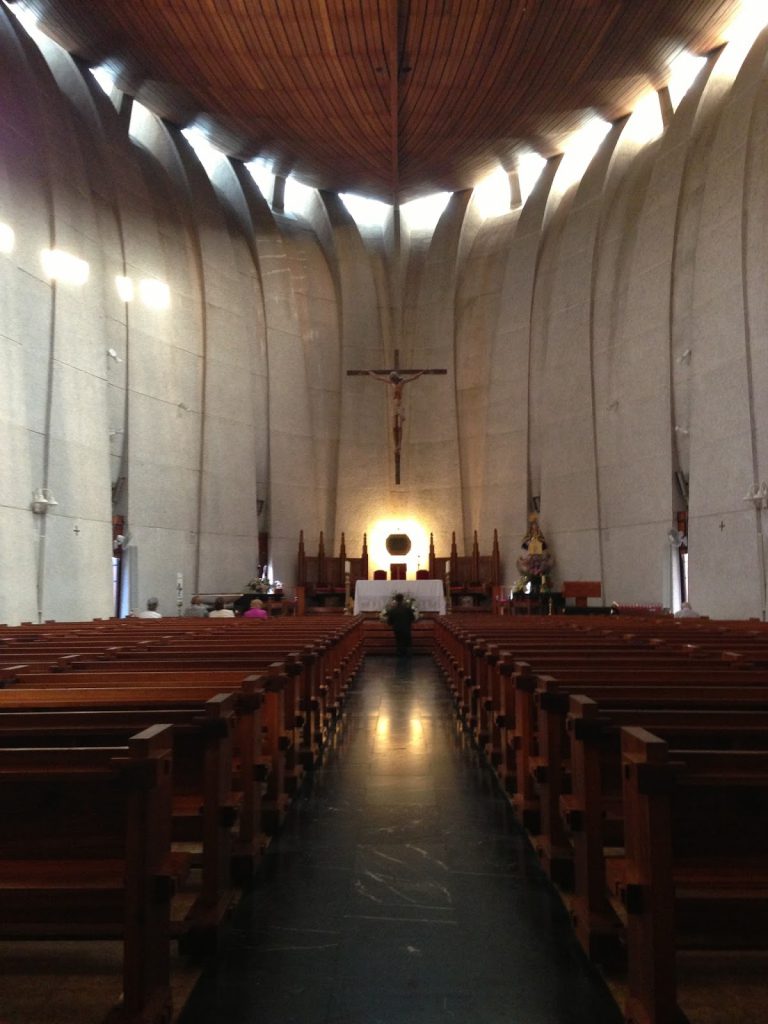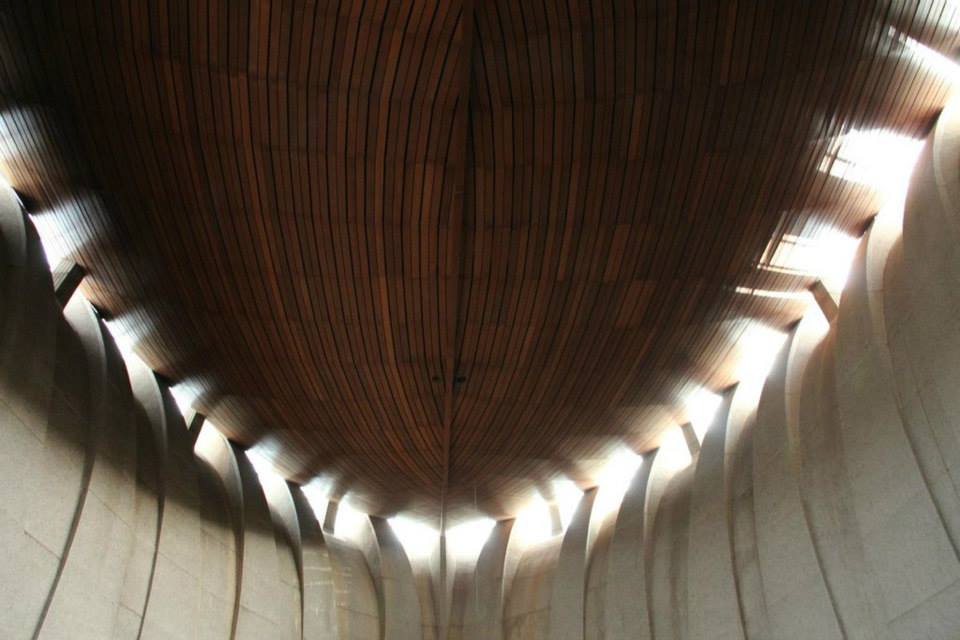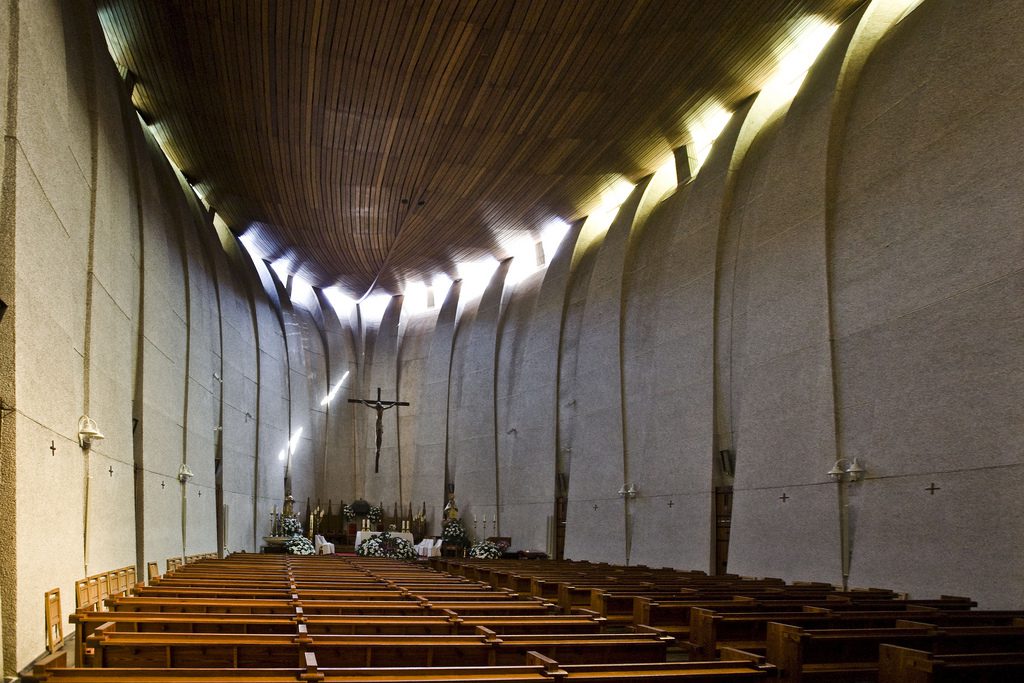The chapel “Virgin of Loreto” was constructed in the year 1961 according to the design by GO.DB. architects, in the port of Jávea. The new construction, which replaced the old hermitage of the fishermen, became the Sea Chapel. It is embedded in the dense fabric of small houses and some residential buildings. Its two main buildings: the chapel and the parochial dependencies are arranged in the limits of the lot, leaving a central and landscaped free space that serves as access. The parish dependencies are organized with regular geometry next to the party wall of the plot. The chapel with curved shapes is exempt by the street, being main protagonist.
El conjunto parroquial “Virgen de Loreto” fue construido en el año 1961 según proyecto de los arquitectos GODB, en el puerto de Jávea. La nueva construcción, que sustituyó a la antigua ermita de los pescadores, se convirtió en la Parroquia del Mar. Se encuentra encajada en el apretado tejido de pequeñas viviendas y algunos edificios residenciales. Sus dos edificaciones principales: la capilla y las dependencias parroquiales se disponen en los límites del solar, dejando un espacio libre central y ajardinado que sirve de acceso. Las dependencias parroquiales se organizan con geometría regular junto a la medianera de la parcela. La capilla de formas curvas queda exenta junto a la calle, y cobra todo el protagonismo.
This monument that rises over the surrounding building, has multiple interpretations: the clear intention of raising the sea to the sky, with the skylights that surround the hull of a ship as a roof; the twelve apostles or angels that save this boat acting as buttresses, or the finish of the exposed concrete surface: the pitching of the vertical grooves could recall the foam of the sea agitated with such movement. All this thanks to the work in the formwork of the carpenters, highlighted by the architect as one of the most important aspects of the project.
Este monumento, que se eleva sobre la edificación circundante, tiene múltiples interpretaciones. La clara intención de elevar el mar al cielo, con los lucernarios cenitales que rodean el casco de un barco como techo. Los doce apóstoles o ángeles que salvan a esta embarcación actuando como contrafuertes. O el acabado de la superficie de hormigón visto: el picado de las estrías verticales podría recordar la espuma del mar agitado con tal movimiento. Todo ello gracias al trabajo en el encofrado de los carpinteros, destacado por el arquitecto como uno de los aspectos más relevantes del proyecto.
The execution of this work is part of an era in which the Catholic hierarchy proposed an approach to the concerns of twentieth-century art, and can be grouped with others such as the Chapel of Ronchamp by Le Corbusier or the church of Grao de Gandía. This work was National Architecture Award in 1969.
La ejecución de esta obra se enmarca en una época en la que la jerarquía católica proponía un acercamiento a las inquietudes del arte del siglo XX, y se puede agrupar con otras como la Capilla de Ronchamp de Le Corbusier o la iglesia del Grao de Gandía. Esta obra fue Premio Nacional de Arquitectura en 1969.
VIA:



